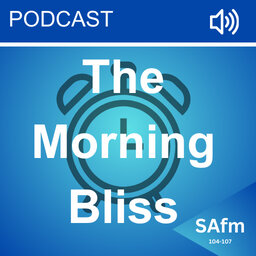Our Dynasty: How the youth of today view democracy, the political government vs the older generation that fought for freedom
How the youth of today view democracy, the political government vs the older generation that fought for freedom.
We are seeing an ever widening gap between the youth and the older generation at the same stage of life. Fewer young people are doing as well as their counterparts from 30 years ago; most are muddling along, searching for opportunities.
The answer to the country's future beyond the 30-year celebration of democracy will be complete with the meaningful inclusion of youth voices. The story of South Africa’s democracy has always had a youthful presence, from the early 70s to the 90s. It was the collective efforts of the June 16 movement, a then young Nelson Mandela and Steve Biko, who with ideas in their youth, channelled the country into a new dispensation of leadership and democracy.
- What is the role of the youth going forward?
- Is the youth of today willing to fight for the country in the next 30yrs?
- What are the struggles the youth shouldn’t be experience after 30yrs? And what are they willing to fight for?
- What is the view/opinion of the youth after the elections?
Looking at the 15-24 cohort in late 2023, using the “expanded” definition of unemployment, a staggering 60.7% are officially unemployed; among the group aged 25-34, unemployment only drops to 39.8%.
Youth are meant to be a generation enjoying a democratic dividend and contributing to a demographic dividend. Neither appears true. In terms of how much potential South Africa has squandered, they represent an entire generation of opportunity lost to the country.
Background information
Marginalised but not lost
In the 1980s and early 1990s, youth had taken on adult roles in political struggles. As ever, they demonstrated their instrumental value to the adults controlling violence on various sides. Those same adults and the media spoke of a “lost generation” – specifically, black, male, urban youth.
For the South African Council of Churches and Southern African Catholic Bishops’ Conference involved in organising the youth in the 1990-94 interregnum through their NGO, the Joint Enrichment Project, the lost generation discourse was anathema. Firstly, because in their view no-one is ever “lost” in spiritual terms; and secondly because of the stigmatising and policy implications of writing off young (black) people entirely.
This gave rise to the “marginalised youth” movement, which sought to understand youth on their own terms, to identify those at risk, those who were doing fine, and those who were pushed right to the margins of society – and design policy responses accordingly.
Marginalisation over time
In 1993, after first presenting to assembled youth organisations in 1992, we released the first iteration of the marginalisation index, Growing up Tough. It comprised 12 dimensions of concern and 32 variables. These included personal experiences of abuse, recidivism, exposure to violence, family status, attitudes to race, self-image, health, political alienation, social involvement, employment status, generational conflict and fatalism.
Despite the belief of our church sponsors that no-one is ever truly “lost”, that became the central category of the index. In all, 5% of respondents scored high on all, or most, of the indicators in the 12 dimensions. “We use the term ‘lost’ with care”, we wrote at the time, but some 500,000 people had “slipped through, or been shoved through, the social net entirely”.
We found that a quarter of youth were “fine” – they only registered positive outcomes on the index. Four in ten were “at risk”: they were showing signs of concern on a few dimensions in the index. “Marginalised” youth were most in need of urgent intervention. They comprised more than a quarter (27%) of the 1992 sample and scored high on many of the 12 dimensions of concern. How to keep them from slipping further should have been a key policy challenge for the democratic period.
The index was changed after 1994, since some indicators were specific to the transition South Africa was going through and others, such as HIV and AIDS, had barely featured in the early iteration of the index.
It was rerun in 2000 (only on black African youth), and results suggested their status was improving: no respondent scored high on more than eight of the 12 areas of concern.
In other words, eight years after the first measurement, where 5% of youth appeared “lost”, no urban black African youth in 2000 fell into the “lost” category. Four in ten (44%) respondents were “at risk”, scoring high on two or three areas of concern; another 33% scored high on slightly less than half the areas of concern. It seemed that progress was being made.
Most of the items in the index were later used by the Gauteng City Region Observatory in its early Quality of Life survey, allowing analysis of marginalisation across the entire Gauteng province population.
The total of those who are were “fine” (using the 2018 data) fell to 16% of youth, from a high of 25% in 1992. At the other extreme, we found 5% of Gauteng youth were again “lost”. The trend suggested that 2000 was a high point. After that, young respondents were doing less and less well, both objectively and subjectively.
Behind the overall data is a predictable racialisation. For example, in the 2018 analysis, while a third of white (33.3%) and Indian (34.8%) youth were “fine”, this was true for only 14.1% of African and 22.1% of coloured youth. This pattern has remained true since the index began in 1992. In 2018, to be young, black and male in Gauteng was to have the highest likelihood of being marginalised. Only 0.3% of white youth (and 0.5% of Indian youth) showed signs of high marginalisation.
Guest: Azania Tyhali UWC MA in Development Studies, youngest NWC member of the PAC and black woman
 The Morning Bliss
The Morning Bliss


